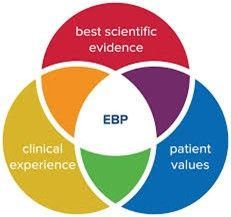Why Do Teens Use Drugs? FBA Says It Depends.
Functional Behavior Analysis (FBA) shows how the function of the behavior is the key to interventions.

Teenage alcohol and drug use is a problem that will continue without proper detection and treatment. The usage patterns have stabilized in some ways due to COVID-19. The National Institute on Drug Abuse indicates that substance use stabilized in 2022. However, SAMHSA reports that while cocaine, methamphetamine, and heroin usage is not growing, prescription usage is rising quickly.
Most programs (and families) try to understand why teens use drugs. One approach is to look at the causes. CHOC produced an article outlining some of these reasons, such as peer pressure, trauma, genetics, etc. However, while causes are valuable, they miss the real motive behind drug use.
Functional Behavior Analysis or FBA, also known as Functional Behavior Assessment, is a way to evaluate the client’s behaviors and determine the function or reason for their occurrence. The practitioner evaluates the client by observing them while gathering information from the client and others. Then the practitioner looks at the antecedent to the behavior (what triggered it), the behavior itself, and the consequence of the behavior (what did it do for the client). Knowing these steps helps to strategize different approaches.
Getting back to drug use, what might be the functions of it or the reasons a client may do it? Five functions of FBA can explain the behavior, as follows:
Connection – a teen may use drugs to feel part of a group, feel connected, to socialize. Teens that need connection will use drugs to be in a peer group, have something in common with other teens, and feel accepted by this group. The practitioner must work with the teen on their socialization and communication skills to change the behavior. Then directing and assisting the teen in finding other non-using friends will guide them to improve their social skills.
Escape – some teens who experience trauma use to run away from the inner feelings they have emotionally. Drugs numb them so they do not feel the trauma triggers. The practitioner must teach the teen how to cope with the emotions, find mindfulness skills to mitigate them and help them feel stronger by walking through their fears.
Control – teens who need control believe no one protects them, so they must be in charge. Using drugs makes them feel in control. In this case, the practitioner must get a support network around the teen so they do not feel alone and that others can help them with their problems.
Stimulation – because drugs put the teen in an altered state, they like the feeling compared to the pain and angst of growing up. It helps them with their moods and to feel more aroused or calmer. The practitioner can help them develop other physical or mental health activities that replicate these feelings. Sports, mindfulness, as with the Escape function, and sensory integration exercises are examples of interventions.
Access – when teens need independence, they turn to drugs. The teen may use drugs to be defiant to adults, feel the need to be free, and do something that adults disapprove of. The practitioner can help the teen learn social communication and other skills that give them freedom.
These are some examples of how learning the function of the teen’s drug use improves the strategies to work with them. FBA is an excellent approach to use with this challenge.




